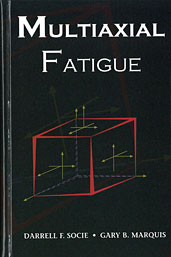Journal Article
Fatigue Life Estimation of Front Subframe of a Passenger Car Based on Modal Stress Recovery Method
2015-04-14
2015-01-0547
In this paper, the dynamic stress of the front subframe of a passenger car was obtained using modal stress recovery method to estimate the fatigue life. A finite element model of the subframe was created and its accuracy was checked by modal test in a free hanging state. Furthermore, the whole vehicle rigid-flexible coupling model of the passenger car was built up while taking into account the flexibility of the subframe. Meanwhile, the road test data was used to verify the validity of the dynamic model. On this basis, the modal displacement time histories of the subframe were calculated by a dynamic simulation on virtual proving ground consisting of Belgian blocks, cobblestone road and washboard road. By combining the modal displacement time histories with modal stress tensors getting from normal mode analysis, the dynamic stress time histories of the subframe were obtained through modal stress recovery method.

